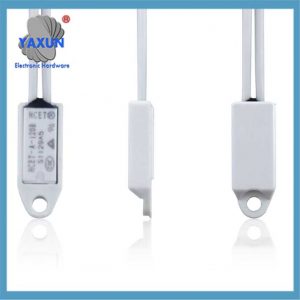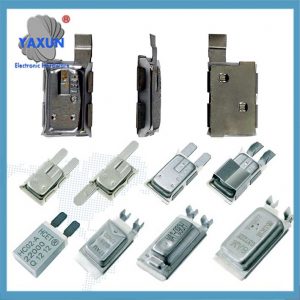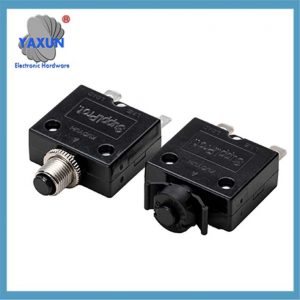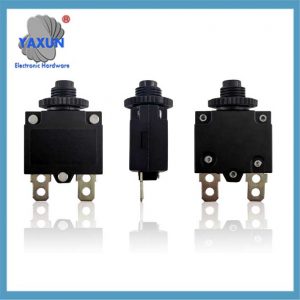Comparison of the differences between micro motor overheat protection switch & Защитник перегрузки. When it comes to micro motor thermal protectors, the price range is between $0.1 yuan and $0.4 yuan. Models include 5ap, ТБ02-BB8D, 17am, КСД9700, ST01, S06, и т. д., which are mainly used for seat sunroof wiper motors and have sealing and waterproof characteristics. Parameters of the 17AM model: normally closed, рабочая температура 120 градусы, maximum current 10A~35A. Automatic reset function, suitable for military, medical and other fields. Here we need to emphasize the temperature range and current parameters, as well as the characteristics of automatic reset.
Regarding motor overload protectors, motor motor protectors (M-B) use microprocessor technology. It has multiple protections such as overcurrent, обрыв фазы, и стойло, and the trip time is adjustable (0.2-30 секунды), and supports manual or electric reset. The parameter setting method is supplemented, such as setting the overcurrent protection to 1.5-2 times the rated current and the overload to 1.1-1.3 раз. These settings are very important for practical applications.
The motor overload protector stall protection takes effect after the startup is completed. When the current exceeds the set value, it will immediately act. The quick-break protection is for short-circuit faults, and is divided into two states: startup and operation. The overheating inverse time protection is based on the heat accumulation model, combining the thermal effects of positive and negative sequence currents. These protection mechanisms need to be explained in points to ensure that users understand how to handle different faults.
In terms of installation and compatibility, it is pointed out that the protector can be installed at the front end of the inverter, but attention should be paid to the rated current matching and grounding requirements (wire diameter ≥3.5mm², сопротивление <10Ой). The difference between thermal relays and temperature relays is that the former is based on the thermal effect of current, and the latter is installed inside the motor to measure temperature. It is necessary to distinguish here to avoid confusion.
я. Overheat protection switch (temperature protector)
Working principle and characteristics
Using bimetallic temperature sensing elements, when the temperature reaches the set threshold, the contacts automatically open/close and cut off the circuit; Когда температура падает, it automatically resets and resumes work.
Typical models: such as 17AM, 17AM+PTCT, TB02-BB8D series, operating temperature 40℃~160℃, maximum current 10A~60A, rated voltage 250V, normally closed design, with waterproof sealing function.
Volume and installation: Miniaturized design (such as flat installation), suitable for space-constrained scenes, directly embedded in the motor winding or the surface of the heating component.
Core application scenarios
Automotive micro motors: моторы люка на крыше, моторчики стеклоочистителей, seat adjustment motors, и т. д..
Бытовые приборы: low-power devices such as cooling fans, water pump motors, and power tools that need to prevent overheating.
In an ignition system, it can shut off the engine to prevent damage from overheating.
II. Overload protector (KUOYUH motor protector)
Multi-function protection mechanism
Overload protection: Monitor current and trip when it exceeds the rated value (usually set to 1.1-1.3 раз).
Short circuit protection: Instantaneously cut off the circuit when the current rises abnormally (action time <0.1 второй).
Stabbing protection: If the current continues to be ≥200% of the rated value after starting, it will act immediately.
Phase loss/unbalance protection: When there is a phase loss or three-phase imbalance, it will respond within 3 секунды.
Monitors the current flowing through the motor circuit and opens the circuit when the current exceeds a predetermined limit.
Mechanism:
Can be thermal (using a bimetallic strip) or electronic, and trips after a certain time delay to allow for starting surges.
Use Cases:
Protects motors from damage due to sustained overcurrent situations, such as those caused by a jammed impeller or high-torque load.
Пример:
A refrigerator compressor overload protector will shut off the compressor if it overheats or if it fails to start.
Technology upgrade features
Integrated microprocessor, supports real-time high-precision monitoring of current, voltage, температура, and displays the cause of the fault through LED.
It has both communication functions (such as RS485 interface) and supports remote reset and data upload.
Compatible with 35mm rail installation, can directly replace traditional thermal relays.
III. Selection and installation points
Parameter setting principle
Overcurrent protection current: set to 1.5-2 times the rated current of the motor.
Temperature protection: Номинальный ток 0.8 times the rated value of the motor.
Stall protection: The threshold is set to 200% of the rated current, and the action is zero-delay.
Compatibility considerations
When installing the inverter front end, the inverter output power must be matched, and the rated current is adjusted to the maximum to avoid false triggering.
Grounding requirements: The protector and the motor must be reliably grounded (wire diameter ≥ 3.5mm² copper wire, grounding resistance <10Ой).
IV. Comparison of typical products
| Type | Overheat protection switch | Overload protector |
| Representative models | 17ЯВЛЯЮСЬ、17AM +PTC,5ап、ТБ02-BB8D, S01, S06, 8ЯВЛЯЮСЬ, 3член парламента,2член парламента | КУОЮХ 88, 91, 98 ряд; ARD2 series, EOCR3DE |
| Core functions | Temperature sensitive disconnect/reset | Multiple protections such as overcurrent, короткий замыкание, and phase failure |
| Applicable current | ≤20A (micro) | ≤80A (промышленный) |
| Applicable scenarios | Small power motors, sealed environments | Industrial motors, frequency conversion systems |
Tip: For micro motors, integrated temperature switches (such as 17AM) are preferred for compact protection; in industrial scenarios, intelligent protectors (such as ARD2) are required to deal with complex faults.
 English
English Afrikaans
Afrikaans العربية
العربية বাংলা
বাংলা bosanski jezik
bosanski jezik Български
Български Català
Català 粤语
粤语 中文(简体)
中文(简体) 中文(漢字)
中文(漢字) Hrvatski
Hrvatski Čeština
Čeština Nederlands
Nederlands Eesti keel
Eesti keel Suomi
Suomi Français
Français Deutsch
Deutsch Ελληνικά
Ελληνικά हिन्दी; हिंदी
हिन्दी; हिंदी Magyar
Magyar Bahasa Indonesia
Bahasa Indonesia Italiano
Italiano 日本語
日本語 한국어
한국어 Latviešu valoda
Latviešu valoda Lietuvių kalba
Lietuvių kalba македонски јазик
македонски јазик Bahasa Melayu
Bahasa Melayu Norsk
Norsk پارسی
پارسی Polski
Polski Português
Português Română
Română Русский
Русский Cрпски језик
Cрпски језик Slovenčina
Slovenčina Slovenščina
Slovenščina Español
Español Svenska
Svenska ภาษาไทย
ภาษาไทย Türkçe
Türkçe Українська
Українська اردو
اردو Tiếng Việt
Tiếng Việt






